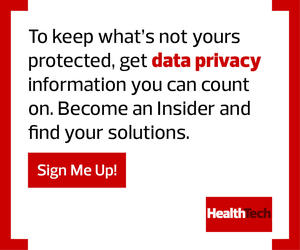Adopting a Resilient Power Management System
Natural disasters have always threatened healthcare facilities, from hospital campuses to urgent care clinics, with unexpected outages, but the growing frequency of such events lends new importance to power management infrastructure as a key component of disaster preparedness. Prevention and visibility are key factors for achieving the always-on power that healthcare systems demand, especially with a growing number of organizations taking a hybrid IT approach and pushing more data to distributed infrastructure at multiple locations. While large university hospitals and local clinics face the same threats during a natural disaster, each facility should take a unique approach to accommodating its specific capacity and monitoring needs.
An integrated power management system offers critical support for avoiding downtime and safeguarding infrastructure from surges, outages and other issues stemming from hurricanes and other disasters. A baseline power management system should include:
- Uninterruptible power supplies: A UPS serves as the foundation of a power protection strategy, providing critical backup power as well as a bridge to generator power to ensure critical IT functions continue running in the event of an outage. With lithium-ion batteries now more available and cost-effective, IT departments can extend the value of their UPS investments with longer battery life in a smaller footprint. And, with integrated network cards, managers can benefit from enhanced connectivity and improved security while integrating with disaster avoidance software and other network-connected devices.
- Disaster avoidance software: In a decentralized healthcare IT environment, many organizations may be operating without onsite support staff much of the time. This makes disaster avoidance software essential for maintaining control over critical power infrastructure — and it’s where intelligent power management software demonstrates its greatest value. IT departments should consider cloud-based software that offers enhanced visibility and control, with the ability to gracefully shut down or reboot a ‘hung’ server or other equipment from a remote location in the event of an unforeseen power loss and protect critical infrastructure from damage or costly outages.
- Remote monitoring and predictive analytics: Digital innovation and advancements in Internet of Things connectivity have increased expectations for secure, real-time access to system data. Remote monitoring services for power management devices can enable IT departments to better assess equipment health and replace required components before they fail. Additionally, predictive analytics can be used to evaluate power trends over time, giving IT managers the information they need to make better decisions and proactively fix or replace equipment rather than wait for issues to occur.
READ MORE: 5 things healthcare teams should ask about disaster recovery as a service.
Protecting IT with Cybersecurity and Physical Security Measures
To avoid compromising patient data and privacy, IT departments should make sure to incorporate cybersecurity safeguards as part of any procurement of power management equipment, especially as hospitals have become more susceptible to ransomware attacks since the COVID-19 pandemic. It is important to seek out technologies that have been certified to meet critical cybersecurity standards, such as UL 2900-1 and IEC 62443-4-2, to protect UPSs against potential attacks. Such security combined with power management software will allow IT staff to make timely firmware updates to stay ahead of evolving cybersecurity threats.
Physical security is another element to consider when developing an end-to-end disaster preparedness strategy. Deploying smart security locks on IT racks can ensure IT equipment, including UPSs and other power management devices, are safe and accessible only to authorized personnel.
DISCOVER: Healthcare organizations should make backup planning a forefront objective.
Critical Power Protection from Storms Fred to Wanda
As hurricane season enters its peak months, healthcare IT departments can bolster their disaster preparedness by adopting a robust power protection strategy. Hurricane forecasters expect each named storm — from Fred to Wanda — to be unique, and IT departments should take the same approach when purchasing and deploying power management equipment in each of their facilities.
By taking the time to research the right solutions for their unique needs, IT staff can create resiliency in their infrastructure that will allow them to continue providing critical support for healthcare professionals and the patients they serve.











